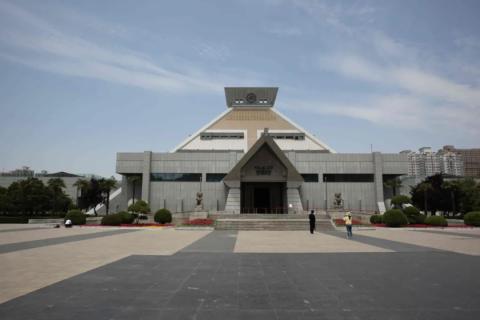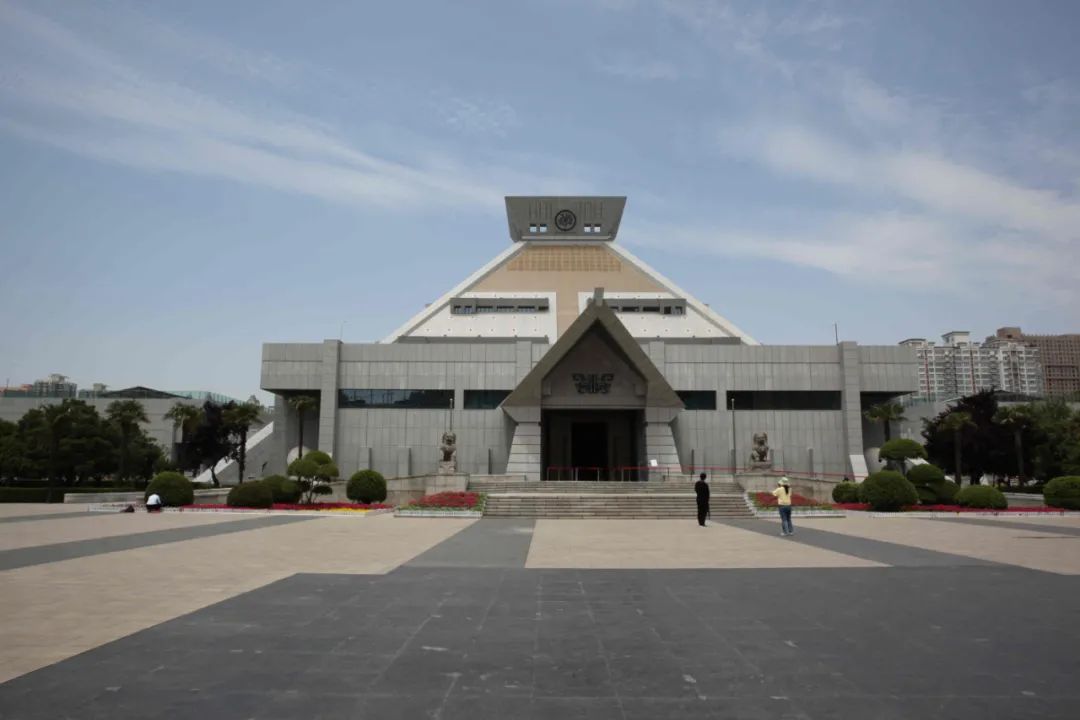
On May 23, 2021, the 23rd day of the "Northeast Travel - Root-Seeking Journey" departed from Shijiazhuang, Hebei Province, Hebei Province at 7:52 in the morning, drove 416 kilometers to Zhengzhou, Henan Province, checked into the Information Hotel, and visited the Henan Provincial Museum in the afternoon.

The Henan Provincial Museum has many excellent cultural relics and complete sets, making it undoubtedly the top museum in the country. There are Wu Zetian’s gold slips and Jiahu bone flute. At 4 o'clock in the afternoon, I watched "Chinese Ancient Music - Musical Cultural Relics Restoration Exhibition" in the concert hall of the museum, which can be described as a reappearance of ancient music performance. Well worth the trip!
1. Consumption on the same day
The day's journey was 416 kilometers, 317 yuan for gasoline, 165 yuan for tolls, 83 yuan for supermarkets, 33 yuan for snacks, 146 yuan for accommodation, 80 yuan for performance tickets, and the total consumption for the day was 824 yuan.2. Henan Provincial Museum1, the province of the Central PlainsHenan is located in the Central Plains, has a long history and rich cultural relics. It is one of the important birthplaces of Chinese civilization. Since ancient times, our ancestors have multiplied and lived in this vast land and created a colorful ancient culture.
The nine bends of the Yellow River, between Zhongtiao Mountain and Wei Mountain, rush through three gates and flow thousands of miles.
The Central Plains is embraced by the Yellow River, with Taihang in the north, Hanhuai in the south, Funiu in the west, and Qilu in the east. Yu controlled the floods and divided the nine states. This place was called "Yuzhou". Because it was located among the nine states, it was also called "Zhongzhou".The fertile soil here is boundless. It is a paradise for ancient ancestors to survive, a residence for the descendants of Yan and Huang to thrive, and the source of the formation and development of the Chinese nation.
This place was first called "China". When the early country was established, it was at the center of the dynasty, with convergence from all directions and tribute roads from all directions; This was the core area of the unified central dynasty, with highly developed politics, economy, and culture, and a gentle and polite place. Culture and education are prosperous.
2, the birthplace of Chinese civilizationAmong the ancient civilizations in the world, only the Chinese civilization has inherited the same line and continues to this day. The Central Plains is the most complete region in the genealogy of this civilization.
Chinese writing originated from oracle bones and came from the Yin Ruins;
Chinese philosophy originated from the Book of Changes and was developed by Laozi;Chinese surnames originate from Yanhuang and have roots in the Central Plains;China's dynasties originated in the Xia Dynasty, and their capital was Heluo...
The Chinese civilization nurtured in the Central Plains is the backbone of Chinese civilization and opens the source of the Chinese nation’s civilization. Over the past thousands of years, more than 20 dynasties have established their capitals here, including Luoyang, Kaifeng, Zhengzhou and Anyang. The famous capitals face each other, with overlapping city walls and rich cultural heritage. The Silk Road extends from Luoyang, and the culture of the Central Plains embraces hundreds of rivers and radiates all over the world, interpreting the glorious vitality of the Chinese nation.

Because it has a large number of fine cultural relics, there was once a comment like this: "Except for the Palace Museum, the Henan Museum ranks second in terms of items collected by Chinese museums. "
In 684 AD, Wu Zetian changed the name of the eastern capital Luoyang to the "Shen Capital". After Wu Zhou was established in the first year of Zaichu (690), Luoyang was made the capital. From the reign of Xianqing to his abdication in the first year of Shenlong (705), Wu Zetian conducted a lot of business in Luoyang, constantly migrating Guanzhong people to live in Luoyang, developing urban industry and commerce, and implementing an opening policy, making the entire city of Luoyang "vendor trade. "The city is crowded with carriages and horses", business is unprecedentedly prosperous, and it has become an international metropolis, ranking above Chang'an.
4, Wu Zetian’s Golden Slips
In 1982, a gold slip was discovered on the north side of Junji Peak of Songshan Mountain in Dengfeng County, weighing 2235 grams. It was made of gold with a purity of 90%. It was engraved with a double hook inscription of 63 words, which means: Wu Zetian devoutly believed in the truth of Taoism and longed for immortality. He is not old, so he sent the young envoy Hu Chao to the Tianmen of Songyue to deliver a pass of gold slips and beg the three officials and nine governments to exempt him from the crime. There are five new characters created by Wu Zetian on the gold slips, namely (国)mo, sun, moon, and chen. This gold slip is a precious material for studying Wu Zetian’s thoughts in his later years.
5, Qingming Riverside Scene Model (Part)
"Along the River During the Qingming Festival" by Zhang Zeduan, a famous painter in the late Northern Song Dynasty, uses a panoramic composition and rigorous and delicate brushwork to depict the natural and harmonious scenery of the suburbs, Bianhe River and streets of Tokyo, the capital of the Northern Song Dynasty, during the Qingming Festival. In the painting, the streets and markets are crisscrossed, the thoroughfares are blocked by vehicles and horses, the crowds are flowing, and the boats are connected to each other, showing the real life of the people in Kaifeng in the Northern Song Dynasty.

It is an important part of the treasure house of Chinese national art. It may be a round sculpture, a relief, or an inscription to record events or create an image. The content is rich, colorful and all-encompassing.

The Central Plains is home to a vast array of ancient stone carvings. The deep and majestic stone carvings of Han Dynasty portraits, the solemn ceremonial guards of mausoleums, and the dazzling array of stone inscriptions all embody the national temperament and the spirit of the times.

In particular, the lifelike images of the Buddhist kingdom leave people with endless artistic enjoyment, showing the uncanny skills and extraordinary aesthetic taste of ancient artists. Luoyang Longmen Grottoes are one of the four famous grottoes in the country.
3. Watch "Chinese Ancient Music - Musical Cultural Relics Restoration Exhibition"The performance begins with the performance of Jiahu bone flute. Between 1983 and 2001, seven excavations were conducted at the Jiahu site, and a large number of bone flutes were discovered, mostly unearthed in tombs. It has been determined that the age is between 9,000 and 7,500 years ago, and can be roughly divided into three phases: early, middle and late, with various types. The development of its scales from simple to complex shows the gradual nature of the origin of ancient Chinese music culture.
1, music soundcertificate source
The unearthing of the Jiahu bone flute provides us with important physical information for understanding and studying the origin and early appearance of Chinese music, pushing the origin of Chinese music back to 9,000 years ago.
In recent years, early bone flutes and bone whistles have been discovered at home and abroad, such as Germany, France, Russia, Slovenia, Zhejiang, Inner Mongolia, Ruzhou, Henan, Changge, Henan and other places. Most of the bone flutes discovered abroad are from an earlier age and are derived from cave bear leg bones, vulture leg bones, deer bones, ivory, etc. Most of the discoveries are isolated examples. The Jiahu bone flute has a complete group and development sequence, rich coexisting relics, standardized production methods and traces of long-term use and maintenance.
4. What I know about Henan1, Chinese characters originated in HenanAccording to the article "Chinese Characters Born in Henan" by Nan Xianghong in the 7th issue of "China National Geography" in 2008The earliest deed-carving symbols discovered so far in China are in Henan; the first set of oracle bone inscriptions with a complete Chinese character writing system were unearthed in Henan; Li Si, who helped Qin Shihuang "write the same text" and formulate the standard writing of "Xiaozhuan", was from Shangcai, Henan; he wrote the world's first Xu Shen, a philologist who compiled a dictionary, summarized the rules of Chinese character generation, and unified character meaning analysis, was from Luohe, Henan. He completed the Chinese philology masterpiece "Shuowen Jiezi" in his hometown; the standardized fonts we still use today "Song style" characters originated in Kaifeng, Henan. The history of Chinese character culture that lasts for more than 4,000 years can be said to be a history of Chinese characters in the Central Plains. The emergence of Chinese characters and almost every important stage of their development occurred in Henan.
2, Henan, the granary and kitchen of China,
In supermarkets across the country, 4 out of 10 dumplings are from Henan "Missing", 6 out of 10 glutinous rice balls are from Henan "Sanquan", and 5 out of every 10 ham sausages are from Henan "Sanquan". Shuanghui". This land with China's largest granary is becoming China's kitchen.



































